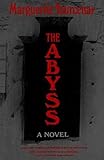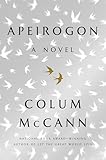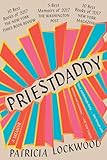I.
For me the pandemic began in earnest on March 11–the same day I first made the acquaintance of my now old-frenemy Zoom. One of my graduate students had recommended it the night before, after a straw poll had found that most of her colleagues would rather the week’s class not be held in person. I’ll admit it’s a bit hard, so many months later, to explain why I myself wasn’t better prepared for this; had I not spent an entire session, back when I’d barely heard of Wuhan, lecturing from the classroom’s remotest corner and insisting between sneezes, “Don’t worry–hay fever!”? Hadn’t my mother-in-law (of doughty pioneer stock) left behind an entire closetful of toilet paper and canned beans at the end of her last visit, five days ago? And hadn’t the first documented case of community spread in New York walked into an ER a half mile from campus in the interim? Weren’t swaths of Westchester County already locking down? But denial is a mother, too, I guess, and cordons sanitaires and “airborne toxic events” still seemed possible only in novels. So when I called my department chair the next morning to check was I allowed to hold this week’s class online, my main feeling was a (perhaps prophetic) dubiousness about distance learning. His response? “Well, as of Friday, the college has suspended all in-person interactions for the rest of the semester, so you might as well get a jump on things.”
Gulp.
On the syllabus that day was Mrs. Dalloway. I should state for the record that I already vibrate at a sympathetic frequency with this novel, bursting into unaccountable tears every fifteen pages or so–and at different places each time. Indeed, my ideal reading of Mrs. Dalloway, a reading of perfect Buddhist attunement, entails crying continuously from the first sentence to the last and then dying immediately after. (Of joy. In the year 2072).
Wikipedia informs me it’s Montherlant, not Chekhov, who said that happiness writes white–i.e., generates no contrast, leaves no mark on the page–and though exceptions range from the denouement of War & Peace to Updike’s short story “The Happiest I’ve Been,” the rule more or less holds…which is why Clarissa Dalloway is so singular in world literature. Through the whole of the novel that comprises her, she remains more or less happy, more or less lucky (privileged, we’d say). “What a lark! What a plunge!” Nor does much compensatory plot eventuate around her to stoke suspense. No, the mystery that haunts these pages–among the most vivid ever written–is one of pure consciousness: what makes Clarissa, on a June day in 1923, so particularly aware of her happiness, so exquisitely open in the face of the virile alternatives–the self-pity of Peter Walsh; the self-satisfaction of “admirable” Hugh Whitbread; the terrible auto-auto-da-fé of Septimus Smith? Every fiction must on some level address the Passover question, Why is this day different from all other days?…and a fortiori with Mrs. Dalloway, to whom, as in a Seinfeld episode, so little seems to happen.
Reading in and around the book through the years, I’ve become more and more aware that any answer starts with World War I. Though Mrs. Dalloway is set a half-decade after the armistice, it very much–consciously, I think–sustains the illusion of the first summer of peacetime. Indeed, given the scale of the recent trauma, the 20 million dead, part of the wonder Clarissa feels walking through her city’s crowded streets may be that there’s anyone left to crowd them. And look: that “violent explosion” over there turns out to be a motorcar backfiring. And the “airplane bor[ing] ominously into the ears of the crowd” is “actually” just “writing something! making letters in the sky!” Glaxo…no, Kreemo…no, toffee! The sweetness one feels here is, in part, relief:
What she loved was this, here, now in front of her…or did it not become consoling to believe that death ended absolutely? but that somehow in the streets of London, on the ebb and flow of things, here, there, she survived, Peter survived?
How do you make happiness visible? Try darkening the page.
Still, another question has nagged at me: why the three-year time lag? Why not set the thing in 1919? Then, going back through the text in the dwindling hours of my Zoom virginity, I was struck by something I’d forgotten or overlooked in previous readings: a note struck rather more softly, muffled by subclauses and parentheticals and oblique angles of vision. Look again, for example, at our first outward vision of Clarissa,
a charming woman, Scrope Purvis thought her…a touch of the bird about her, of the jay, blue-green, light, vivacious, though she was over fifty, and grown very white since her illness. There she perched, never seeing him, waiting to cross.
And there it is, for anyone reading amid a pandemic: Her illness. But which illness? A few lines later, we find Clarissa sensing, just before Big Ben strikes the hour,
a particular hush, or solemnity; an indescribable pause; a suspense (but that might be her heart, affected, they said, by influenza).
This is all on the second page! I was almost reluctant to google “Woolf dalloway Spanish flu” (and reassured by the then-paucity of results; apparently others had missed the pianissimo, as Woolf’s contemporaries wouldn’t have been able to do.) But yes, Virginia Woolf herself had survived the Spanish flu (Cf. “On Being Ill”). It had killed a further 230,000 Britons, and nearly killed her, too.
And so, I heard myself positing a few hours later in my “personal meeting room,” to a gallery view of tiny faces, this book we were all holding in our various hotspots was not just suggesting what life might feel like after wartime, but showing us what it was going to feel like–underneath the contingencies of our different circumstances, and notwithstanding the horror, and the suffering, and the death–to step outside on the first spring day after the pandemic ended. “Because the pandemic will end,” I said, trying to will some optimism out into the ether. “And for a brief while we’ll all get a chance to become Virginia Woolf. Everything will be illuminated– for about two weeks, until it becomes habitual again–in the light of the possibility of there being nothing at all.”
As many of us have learned, there’s no digital equivalent of “room dynamics”–no “Zoom feel”–but I sensed, or hallucinated, a change in the digitized listening. Then the tiny heads began to bob. For a moment, this century-old work of experimental fiction was letting them, and me, see past the catastrophe flooding our screens. And I’d have been happy to leave things there, to go away and cry more Micawberish tears, but then one of my students spoke up. We’d been looking earlier at the novel’s point-of-view movements–the flit to Scrope Purvis, for example–and she’d noted a rough principle: the characters had to be in physical proximity (passing on a street corner, say) for the perspective to jump from one to another. Now she ventured, tentatively, “Is it possible there’s a formal side to the pandemic thing, too? It’s like the point-of-view in the novel moves as a contagion, an airborne virus.”
“That’s exactly what it goddamn does,” I fired off almost instantly, like a neuron in some larger brain. “And that’s exactly what the novel as a form can do. Woolf has just watched this mode of transmission kill 50 million people worldwide, and however consciously, this is her response, her deep wish. She’s trying to re-engineer the mechanisms of death to create an epidemic of life.”
II.
For a long time, that exchange with my students, connection building on connection, would remain the high point of my year in reading. I recount it at length not to suggest that March and April weren’t among the worst reading months of my life; they were. Back in the halcyon days of January, I’d agreed to review a 300,000-word novel, expecting it to take three weeks, and now I was managing to get through about 2,500 words a day–which hardly even seemed to matter, against the fact that equally many people were dying, millions more being thrown out of work as the economy went dark. Even if this novel was worthwhile, which it was, who was going to rush out and buy it, and where?
As I mushed my school-age children (figuratively) through the arctic wastes of Google Classroom, I was having a vocational crisis of sorts, thinking often of the old Philip Roth line about reality outstripping our capacity for invention. I’d once dismissed it as “promoting a competition that doesn’t really exist,” but maybe reality was outstripping that, too. Still, I kept thinking about Mrs. Dalloway. It stood for me, even then, as an object lesson in what fiction could make happen, if I could make myself equal to it: an anti-quarantine, an unsheltering, a positive contamination where we blow right through the six-foot gap with our neighbors and spend weeks afflicting their apartments, years inhabiting their minds. And I continued on some level to suspect that Roth was wrong, and “reality hunger” a category error. The shared subjectivity of literature wasn’t an illusion or an escape so much as something you first had to be able to imagine yourself halfway toward if it was ever to become real.

Imaginative literature, it should be said, doesn’t begin and end with fiction, and I did manage during this period to find some consolation in works of journalism. Because the public library was closed–a loss almost as significant as that of the schools–I found myself trolling the little free ones suddenly popping up like mushrooms all around my neighborhood, and in one of these I found a book called Complexity, by M. Mitchell Waldrop. My fascination with systems theory and its cousin chaos theory dates back to Jurassic Park, but I’ve never had the technical grounding to do much but poetically misunderstand them, so I was edified and then engrossed by the clarity of Waldrop’s reporting on the scientific work of the Santa Fe Institute, in the early 1980s…even as his account of “organized complexity,” all those entangled variables and feedback loops, stoked some concerns about putting Jared Fucking Kushner–the Chauncey Gardiner of legacy admissions, New Jersey’s answer to Candide–in charge of the fucking supply chains.


I was less surprised to find myself loving Gay Talese’s The Kingdom and the Power; he’s among my favorite of the New Journalists. Still, given the seeming desiccation of its subject matter (a game of thrones played out on the New York Times masthead in the 1950s and ’60s), I’d put off reading this one, and now was struck by the sheer chutzpah of Talese’s 40-page dives into the heads and lives of his characters–real people, all. And on the subject of chutzpah, or moxie, or elan, or brio, I should recommend The Brown Album, an essay collection by my old friend Porochista Khakpour, which happened to be published at the height of the first COVID wave. Though its pieces were written over a decade and for a range of magazines, the through-line is fearless self-examination, delivered in the same antic voice that drives Khakpour’s excellent novels.

Oddly enough, it would be Anthony Trollope who, in early May, led me back into fiction. I can think of at least a dozen Victorian novelists whose prose I find more compelling, but costume drama and home repair are my cinematic mac and cheese, and after we’d exhausted the This Old House archives, my wife and I had been tranquilizing ourselves at night with the pretty-good Amazon Prime version of Dr. Thorne. On a whim, I ordered the book, fetched it from the depopulated loading dock back of the bookstore took it to the park, and there it was, returned as it had vanished: the infectiousness of life. I felt like I was learning to read again, curling up with Madeleine L’Engle. I had only to pick up Dr. Thorne to be whisked away to the planet Barsetshire, with its vast deposits of meaningful choices. Now if only I could find a way to smuggle them back to 2020…
III.


But around me, the weather was warming up, whatever force driving the green fuse through the flowers…and fewer people were getting sick, fewer dying, the abnormal becoming the new normal. I found myself sitting in the backyard (what a lark! What a plunge!) amid the companionable silence of the non-traffic and the distant squalling of my daycareless three-year-old’s non-nap, and relaxing my deflector shields enough to be transported. I visited midcentury Paris via A Fairly Good Time, Mavis Gallant’s sublime one-upping of Breakfast at Tiffany’s. Dipped into Chicago’s Bronzeville with my teen idol Gwendolyn Brooks in her mini-bildungsroman Maud Martha, as authentic a work of American modernism as I’ve encountered. Hit the New Orleans-South Texas-Mountain West stations of the cross in Katherine Anne Porter’s novella trilogy Pale Horse, Pale Rider–the one bit of pandemic reading I allowed myself. I wondered: Why don’t more people read Katherine Anne Porter? The genius Mavis Gallant? And why on earth is a standalone Maud Martha out of print?



It hasn’t been quite as often in recent years that a new novel struck me as similarly imperishable, but this summer brought two that did. One was Baron Wenckheim’s Homecoming, the latest and purportedly last novel by László Krasznahorkai. It had been one of the first books in my entire life to intimidate me with its size, not because the page count (550ish) was so high, but because the length and intensity and compositing of Krasznahorkai’s sentences can resemble a lava slide of black type. I was similarly slow years ago to pick up The Melancholy of Resistance, at half the length. But aside from being one of the greatest living writers, Krasznahorkai is funny, too–like Kafka is funny–and Baron Wenckheim is his funniest book, so wild and savage and subtle and depressingly true (its thoroughly corrupted Hungary a mirror for what increasingly seems a rusted-out America) that I had literal difficulty putting it down. I’d allotted something like a month; I finished it in a week. And immediately I grabbed Krasznahorkai’s volume of stories, The World Goes On, because I wanted him to go on, too. (“A Drop of Water” and “That Gagarin” are perfect places, by the way, for the László-curious to toe the magma.)

The other best new novel I read in 2020 was Hilary Mantel’s The Mirror and The Light. It was the last book I’d bought before the lockdown, and it, too, came to seem intimidatingly large, back when I was making it through a few pages a day. But I couldn’t just let it glower at me from the shelf like that, accusing me of abandoning Thomas Cromwell halfway to the chopping block. I picked it up and was pretty much knocked over. For one thing, I hadn’t remembered the richness of Mantel’s sentences. Great prose replenishes the language it’s written in, and for me, the alchemical care with which Mantel handles the Latinate and the Anglo-Saxon does just that; here she is, for example, hovering around some of the very mysteries I’d been thinking about:
Don’t look back, he had told the king: yet he too is guilty of retrospection as the light fades, in that hour of winter or summer before they bring in the candles, when earth and sky melt, when the fluttering heart of the bird on the bough calms and slows, and the night-walking animals stir and stretch and rouse, and the eyes of cats shine in the dark, when colour bleeds from sleeve and gown into the darkening air; when the page grows dim and letter forms elide and slip into other conformations, so that as the page is turned the old story slides from sight and a strange and slippery confluence of ink begins to flow. You look back into your past and say, is this story mine; this land? Is that flitting figure mine, that shape easing itself through alleys, evader of the curfew, fugitive from the day?

I have always sort of dreaded historical fiction, apart from the novels of Robert Graves and Marguerite Yourcenar, but finishing the Cromwell trilogy made me want to read more, if only to try to figure out how Mantel had evaded the typical problem, gotten fact and speculation back into living alignment. Then I recalled that I had yet to read the less famous of Yourcenar’s masterworks, The Abyss, about an alchemist in the Low Countries at the start of the Reformation. And once Maine’s travel ban had softened and we could go there for a while in August, I took the book with me. I’d be reading it on the same small island where Mme. Yourcenar was buried.
It’s not entirely a compliment when people call Yourcenar’s writing “marmoreal”–the connotation is of willed majesty, but also airlessness and weight–but nor is it wholly unfair. Yourcenar’s dialogue is marmoreal. So is the opening of The Abyss, a kind of false front. But then Yourcenar’s obsessiveness takes over, along with her fantastic imagination and her astonishingly syncretic erudition. The novel is as dense and rich and dark as a sachertorte, but also deeply nourishing. And as with any number of her essays (collected in The Dark Brain of Piranesi or That Mighty Sculptor, Time) or the companion piece “Nathanaël” (with its lapidary umlaut) it’s hard to emerge looking at modernity in quite the same way.
IV.
And now comes the part when I realize I, too, have gotten caught up in my enthusiasms, and indulged them at too great a length – though out of solicitude, reader! The holidays are upon us, and you deserve some of the old normal! And because these look to be dark months ahead, let me blaze through a few more recommendations that might keep you going, as they did me.


From post-Yourcenar forays into Europe: Lord of All the Dead, in which the Spanish master Javier Cercas brings to a haunting conclusion his three-book exhumation of his country’s Civil War and its memory…also, the tragicomic palaver of Bohumil Hrabal’s Dancing Lessons for the Advanced in Age, a novel written in a single sentence…and Magda Szabó’s wonderful Abigail, which enfolds the historical irruptions of her own youth in the forgiving rhythms of a young-adult boarding-school novel…and, executing a similar strategy, but along much darker lines, Scenes from The Life of a Faun, by Arno Schmidt, a late German writer of Joycean proclivities about whom I expect to have more to say a year from now.

And then some gems of English prose: Gerald Murnane’s collected stories, from Down Under (which I got onto via an excerpt in Music & Literature)…Dr. Jeckyll & Mister Hyde (which I got onto via Andrew O’Hagan)…and Thomas More’s Utopia (which I got onto via Thomas Cromwell, yet whose depiction of certain existing societal arrangements as at heart insane seems to resonate urgently with the protest–the insistence–that Black Lives Matter).


And then some other new novels I loved: Colum McCann’s Apeirogon, a piercing documentary collage slash tone poem about Israeli human beings and Palestinian human beings…Rachel Cusk’s Outline, as good as everyone says, but for different reasons–and with the added appeal, if “lava flow of black type” doesn’t appeal, of cutting as swiftly and cleanly as a knife through butter…and Inside Story, whose formal and conceptual overload allows Martin Amis to abandon all hope of Nabokovian perfection and write more loosely and candidly than he has since the first part of The Pregnant Widow–just too-clever-by-half enough.

And finally, my other allergy: the memoirs. I can’t remember ever having read more than one of these in a year, and then only by aging rock stars, but apparently my imperviousness to memoir has weak spots. One is for material so unlikely that no writing at all is required to make it interesting (Keith Richards, I’m looking at you.) The other is for writing so lively that even an account of watching hotel-room cable becomes indelible (as with Patti Smith’s M Train.) I happened to read three memoirs this year that fulfilled both briefs at once. The first was Tara Westover’s Educated. Not only does she go from home-schooling with her survivalist sectarian family in Idaho to a year at Oxford (that’s before Dad becomes the King Lear of essential oils); Westover is obviously a born storyteller, writing with tremendous pace, honesty, emotion, and detail.

Jack Goldsmith–the former head of the Justice Department’s Office of Legal Counsel under George W. Bush–writes a somewhat drier prose line; you may remember him blowing the whistle on warrantless surveillance. But he’s also, weirdly, the stepson of the longtime prime suspect in the Jimmy Hoffa disappearance (played in The Irishman by Landry from Friday Night Lights), and his book about it, In Hoffa’s Shadow, never puts a foot down wrong.

And then there’s Patricia Lockwood. If, as Greil Marcus had it, mid-’70s Springsteen was a ’57 Chevy running on melted-down Crystals records, then Lockwood is Gerard Manley Hopkins and Big Maybelle reprising Thelma and Louise in a T-Top Trans Am–her Updike piece in the LRB is for my money the best piece of literary criticism written this decade. So it seems almost cosmically unfair (but a lark! and a plunge!) that she is also the daughter of a Catholic priest whose thing for whammy bars and Fox News is matched only by his antipathy toward pants. Or maybe it makes perfect sense, I don’t know. In any case, I’d happily spend 2021 reading Priestdaddy over and over (though my wife, whom I kept awakening with my cackles, might dissent). And as with any star, Lockwood’s light is indistinguishable from her burning. At graver moments, like the chapter called “Voice,” I had the experience Mantel describes so well:
Is this my life, or my neighbor’s conflated with mine, or a life I have dreamed and prayed for; is this my essence, twisting into a taper’s flame, or have I slipped the limit of myself—slipped into eternity, like honey from a spoon?
In short: Priestdaddy and books more generally got me to the far side of this year’s pain not by distraction, but by guiding me into and then through it. It’s going to be a long winter, people, and we’re going to need that wherever we can find it: stars and more stars, candles upon candles…figurations of brightness, however dark the ground.
More from A Year in Reading 2020
Do you love Year in Reading and the amazing books and arts content that The Millions produces year round? We are asking readers for support to ensure that The Millions can stay vibrant for years to come. Please click here to learn about several simple ways you can support The Millions now.
Don’t miss: A Year in Reading 2019, 2018, 2017, 2016, 2015, 2014, 2013, 2012, 2011, 2010, 2009, 2008, 2007, 2006, 2005
The post A Year in Reading: Garth Risk Hallberg appeared first on The Millions.







